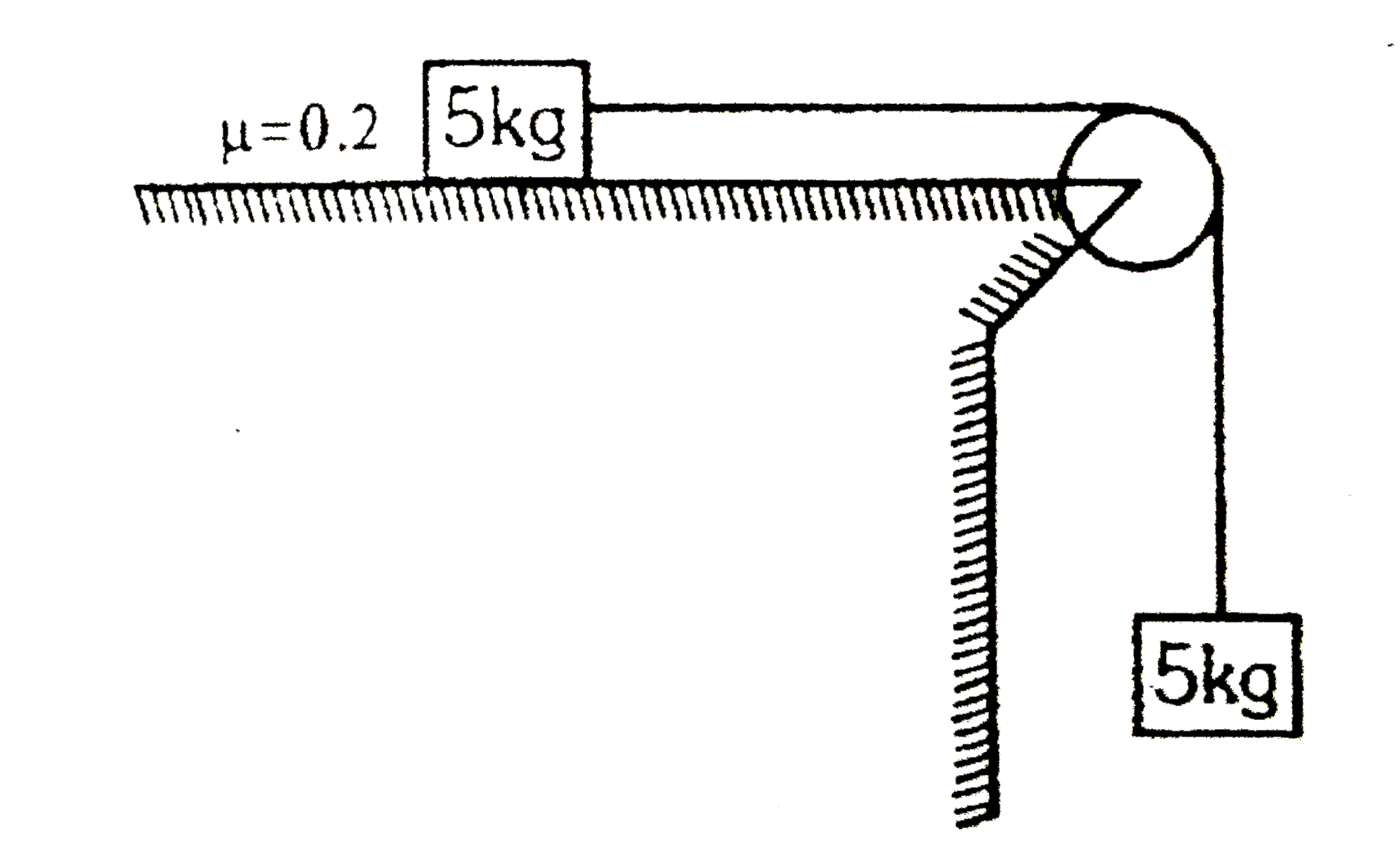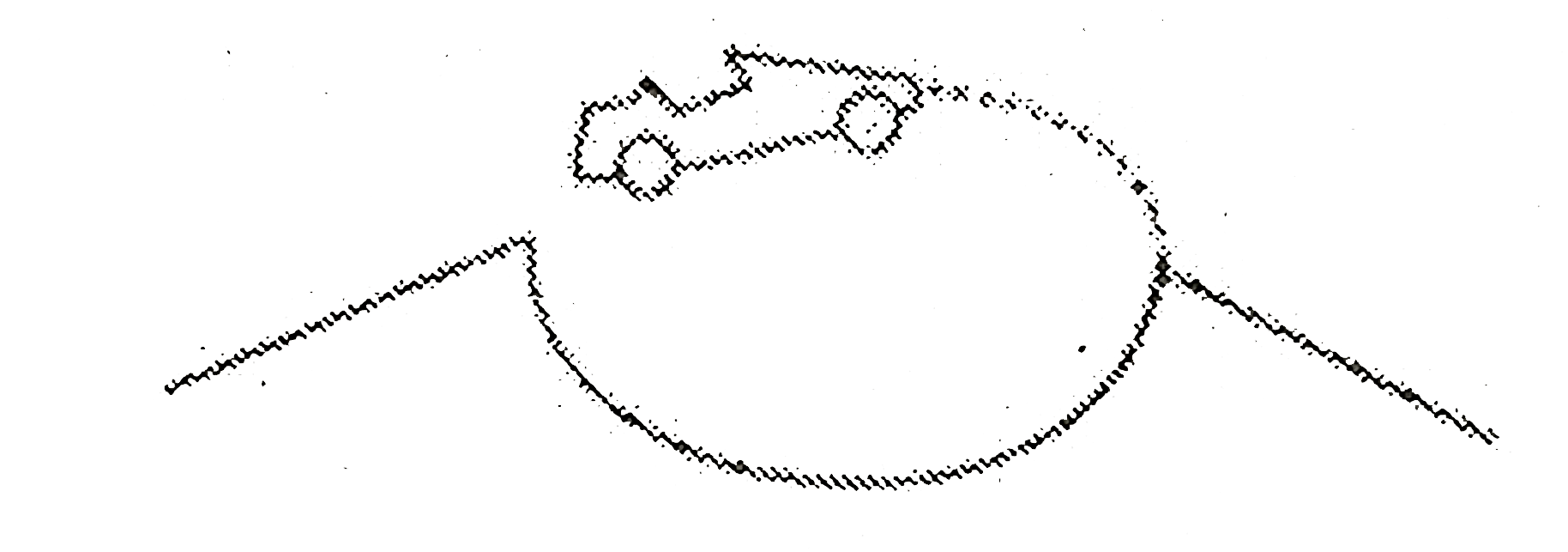Two balls of different masses are thrown in air with different velocities. While they are in air acceleration of centre of mass of the system. (neglect air resistance)?
Depends on the direction of the motion of two balls
Depends on the masses of the two balls
Depends on the magnitude of velocities of the two balls
Is equal to g
The correct Answer is:D
To find the acceleration of the center of mass of a system of two balls thrown in the air with different velocities and masses, we can follow these steps:
1. Identify the System: We have two balls with masses m1 and m2 thrown in the air with initial velocities v1 and v2 at angles α and β respectively.
2. Understand the Forces Acting on the Balls: Since we are neglecting air resistance, the only force acting on both balls is the force of gravity. This force causes a downward acceleration of g (approximately 9.81m/s2) for both balls.
3. Determine the Accelerations of Each Ball:
- The acceleration of ball 1, a1, is g downward.
- The acceleration of ball 2, a2, is also g downward.
4. Use the Formula for Acceleration of the Center of Mass: The acceleration of the center of mass acm of a system of particles is given by:
acm=m1a1+m2a2m1+m2
5. Substitute the Values:
- Substitute a1=g and a2=g into the formula:
acm=m1g+m2gm1+m2
6. Factor Out g:
acm=g(m1+m2)m1+m2
7. Simplify the Expression: The m1+m2 terms cancel out:
acm=g
8. Conclusion: The acceleration of the center of mass of the system is g downward.
Final Answer:
The acceleration of the center of mass of the system is g (downward).
---
- The acceleration of ball 1, a1, is g downward.
- The acceleration of ball 2, a2, is also g downward.
acm=m1a1+m2a2m1+m2
- Substitute a1=g and a2=g into the formula:
acm=m1g+m2gm1+m2
acm=g(m1+m2)m1+m2
acm=g
The acceleration of the center of mass of the system is g (downward).
Topper's Solved these Questions
- SYSTEM OF A PARTICLES & ROTATIONAL MOTIONBook:VMC MODULES ENGLISHChapter:SYSTEM OF A PARTICLES & ROTATIONAL MOTIONExercise:IN-CHAPTER EXERCISE B
Explore 10 Videos
- SYSTEM OF A PARTICLES & ROTATIONAL MOTIONBook:VMC MODULES ENGLISHChapter:SYSTEM OF A PARTICLES & ROTATIONAL MOTIONExercise:IN-CHAPTER EXERCISE C
Explore 10 Videos
- SYSTEM OF A PARTICLES & ROTATIONAL MOTIONBook:VMC MODULES ENGLISHChapter:SYSTEM OF A PARTICLES & ROTATIONAL MOTIONExercise:PRACTICE EXERCISE-7
Explore 5 Videos
- SIMPLE HARMONIC MOTION Book:VMC MODULES ENGLISHChapter:SIMPLE HARMONIC MOTION Exercise:7-previous year question
Explore 46 Videos
- SYSTEM OF PARTICLES AND ROTATIONAL MOTIONBook:VMC MODULES ENGLISHChapter:SYSTEM OF PARTICLES AND ROTATIONAL MOTIONExercise:IMPECCABLE
Explore 56 Videos
Similar Questions
The magnitude of acceleration of centre of mass of the system is

View SolutionTwo balls are thrown simultaneously in air. The acceleration of the centre of mass of the two balls while in air
View SolutionTwo bodies of different masses are dropped similtaneously from the top of a tower .If air resistance is proportional to the mass of the body.
View SolutionConsider a system of two identical masses. One is dropped from a height and another is thrown from ground with speed u.The acceleration of centre of mass of the system at time t is
View SolutionA stunt man jumps his car over a crater as shown (neglect air resistance)

View SolutionTwo balls of different masses are thrown vertically upward with same initial velocity. Height attained by them are h1andh2 respectively. What is h1/h2 ?
View SolutionTwo balls of different masses are thrown vertically upwards with the same speed . They pass through the point of projection in their downward motion with the same speed ( Neglect air resistance ).
View SolutionUnder the force of gravity, a heavy body falls quicker than a light body. (neglect air resistance).
View SolutionTwo particles of masses m and 3m approach each other with different velocities. After collision, the particle of mass m has velocity →v in their centre of mass frame. Velocity of particle of mass 3m in the centre of mass frame is
View SolutionFree-fall : Discuss the motion of an object under free fall. Neglect air resistance.
View Solution